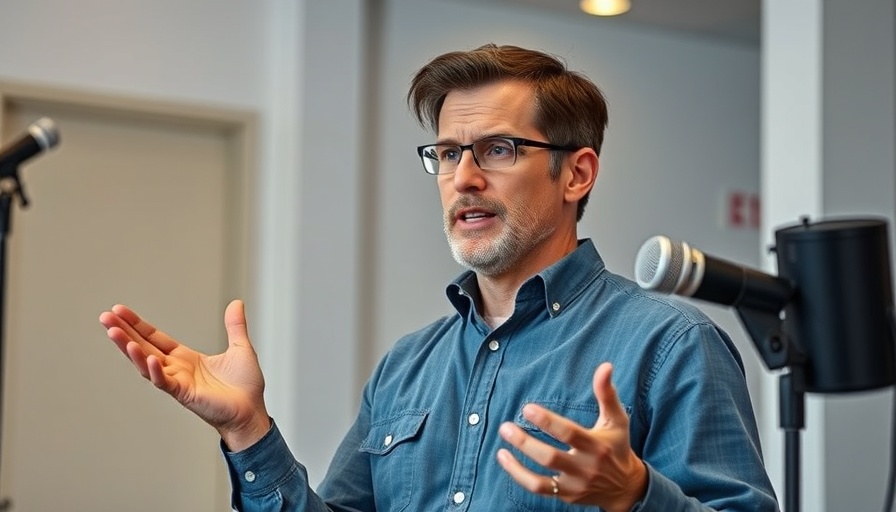
Why Understanding Your Retirement Matters
As individuals approach retirement, the primary concern often revolves around financial stability. However, this is only the tip of the iceberg. A transformative approach to retirement planning focuses not just on money, but rather, how to enhance overall life satisfaction. The PERMA model, developed by psychologist Martin Seligman, is a powerful framework that can revolutionize how retirees view this pivotal stage of life. It suggests that true well-being comes from harmonizing five essential elements: Positive Experiences, Engagement, Relationships, Meaning, and Achievement.
In 'This Can Make or Break Your Retirement,' the discussion dives into practical ways to enhance retirement satisfaction, exploring key insights that sparked deeper analysis on our end.
The Five Elements of a Fulfilling Retirement
Many retirees mistakenly believe that financial comfort alone guarantees happiness in retirement. This misconception can lead to feelings of dissatisfaction and isolation. Here’s a closer look at each of the five elements outlined in the PERMA model:
- Positive Experiences: While fun vacations and leisure activities are vital, they represent just one aspect of a fulfilling retirement. Engaging in enjoyable activities, whether through hobbies, sports, or simply spending time with loved ones, adds joy to life but should be balanced with the following elements.
- Engagement: Finding activities that captivate you, leading to a state of ‘flow’ where time ceases to exist, is crucial. This could be learning new skills or volunteering for community initiatives. Many retirees who come from demanding careers face challenges adjusting to leisure time. Therefore, maintaining a connection to meaningful work, either through mentorship or learning, fosters deep engagement.
- Relationships: Research solidly backs the idea that interpersonal connections are the strongest predictor of happiness. This aspect means sustaining friendships, nurturing family ties, and involving oneself in community groups. Understanding that losing work relationships can lead to isolation is key to nurturing social networks post-retirement.
- Meaning: This encompasses dedicating time to causes that resonate personally. Retirement can feel hollow without purpose. Engaging in volunteerism or supportive mentoring offers a deeper significance to one's existence.
- Achievement: Setting and reaching new goals fosters a sense of growth and progress, important for maintaining motivation and satisfaction. This could involve pursuing projects, learning, or gaining certifications, allowing retirees to experience a sense of accomplishment.
Assessing Your Retirement Plan Using the PERMA Model
To make the most of the PERMA framework, take a moment to reflect on your current retirement plan. Identify where you excelling or where adjustments are needed. By assessing your happiness, engagement, relationships, purpose, and achievements, you can pinpoint areas needing dedication or enrichment. For instance, if positive experiences lack balance, engage more in hobbies.
Valuable Insights for a Meaningful Retirement
In Louisiana, where culture thrives on family, community, and tradition, these elements hold particularly significant relevance. The rich social fabric offers ideal opportunities to cultivate strong relationships, ensuring that isolation doesn’t overshadow retirement. Participating in local groups or activities not only strengthens ties but enriches life.
Practical Tips to Enhance Each PERMA Element
- For Positive Experiences: Schedule regular leisure activities into your calendar. Plan weekend getaways to nearby natural attractions or cultural events to break the routine.
- For Engagement: Join a class or group that suits your interest—this could involve art, music, or physical activities like yoga which also unite people.
- For Relationships: Organize monthly dinners or social gatherings with friends and family to reconnect and share experiences.
- For Meaning: Explore volunteer opportunities with local charities or organizations that pull at your heartstrings—this not only benefits the community but provides a robust sense of fulfillment.
- For Achievement: Set personal milestones, like completing a book or crafting a family story. Cultivating new hobbies fosters pride and satisfaction.
Take Control of Your Retirement
The journey into retirement is not merely about managing savings; it’s about redefining one’s self and purpose post-career. Utilizing the PERMA model enables retirees to take a holistic approach toward their new life stage, ensuring that they thrive rather than just survive. By focusing on these five facets, individuals can craft a retirement that is rich, rewarding, and filled with purpose.
What does your ideal retirement look like? Reflect on your own preferences and ambitions, and consider taking active steps to enhance your experience. Explore local resources available to engage your interests and community involvement. A fulfilling retirement awaits those who dare to shape it!
 Add Row
Add Row  Add
Add 



Write A Comment